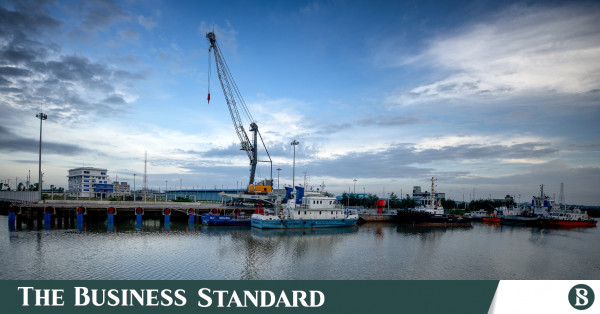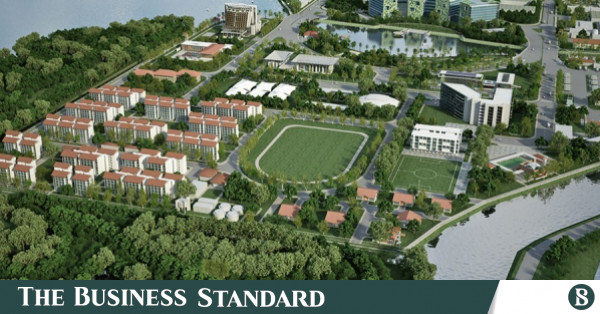Downgrading the project from deep seaport means Payra would not host any mother vessel or very large ships-- but smaller vessels like the ones handled by the Chattogram and Mongla ports
After five years of effort, the government has given up the idea to build a deep seaport in Payra and decided to build a regular seaport there, says State Minister for Shipping Khalid Mahmud Chowdhury.
Accordingly, the port site has been relocated from its original offshore location by 65 kilometres to an onshore location at the mouth of the Rabnabad channel.
Downgrading the project from deep seaport means Payra would not host any mother vessel or very large ships-- but smaller vessels like the ones handled by the Chattogram and Mongla ports.
By the end of this month or early next month, the government will sign a new contract amounting to Tk5,000 crore with a Belgian company, Jan de Nul, under a direct purchase method for capital dredging and maintenance dredging work.
The government had previously signed a Public Private Partnership (PPP) contract worth Tk11,000 crore with Jan de Nul. But the company was having problems in arranging funds on its own.
With the change in project configuration, the government is now providing the money in a loan from its newly-formed infrastructure development fund to the Payra Port Authority.
"The dredging is vital for this port and our target is to maintain a 10-metre draft throughout the 65km Rabnabad channel," said Khalid Mahmud Chowdhury adding that the dredging will be completed in 14 months.
"We are not building any deep seaport here considering that we are a cyclone-prone country and the southwestern region is most hit by cyclones. Prime Minister Sheikh Hasina has made the decision," said the state minister.
This will leave Bangladesh with just one deep seaport project in Matarbari near Maheshkhali that has an 18-metre draft – good enough for berthing mother vessels.
"We can use lighterage ships from Matarbari to Chattogram, Payra and Mongla ports," the state minister said.
The Matarbari deep seaport project is now being developed under a Japanese loan side by side with the Matarbari 1200-megawatt coal power project.
By 2022, the partially functioning Payra port will be fully open with a multi-purpose terminal. "The port will reach its breakeven by 2035," he added.
The construction of the Payra port comes with a host of other infrastructure, including a coal terminal, a coal power plant, a railroad, bridges and roads and a township.
Currently, the government has floated a tender to build a six-lane bridge over the River Andharmanik at a cost of Tk400 crore. This one-kilometre bridge will make the port directly accessible by road.
Payra project at a glance
The Payra Sea Port project has 19 components and the originally estimated cost was between $11 billion and $15 billion to be completed in three phases.
The Rabnabad channel is situated in the Meghna estuary at Tentulia River in Patuakhali. It is about 270km from the Chattogram Port and 90km from the Mongla Port. This site was chosen as it has available land along the channel with an average height of two metres above sea level. The land does not get submerged during the monsoon and it is well connected by road and river networks.
According to a techno-feasibility study prepared by the British farm HR Wallingford & Consortium, the Payra port will require 7,000 acres of land. Of that, 6,000 acres will be used for port development, 500 acres for coal terminal and the rest for the resettlement of people affected by the construction of the port.
The study also assessed weather and wind patterns of the region and found it safe for building the deep seaport.
Since 2016, the project saw a series of changes in financial configurations.
At first, in May 2016, the government signed the first $2 billion memorandum of understanding with Jan De Nul for capital dredging and maintenance dredging of the Payra deep seaport. After a year of study in 2017, Jan de Nul signed an agreement on the basis of foreign direct investment (FDI) to carry out a major capital dredging in about 35 nautical miles (65km) of the Rabnabad channel.
Back then, Jan de Nul was assigned to make the channel operational for deep seaport by the end of 2018 and facilitate the entry of vessels up to 14 metres draught and 300 metres in length. Jan de Nul would form a joint venture company with the PPA, and close the financial arrangements between six months and one year to begin the dredging works.
This financial configuration was later changed into a PPP model and eventually, Jan de Nul said it would not be able to arrange the project fund without a government guarantee and the government was unwilling to provide the guarantee.
Other features of Payra port
The original plans to award contracts for housing, education and health facilities for the port and the developing port community have all been delayed.
It was planned in 2016 that a contract would be awarded to build an airport to connect with the capital by 2019 so that Payra could receive passengers for a nearby resort, casino and tourism in the Sundarbans.
The government also wants to build a railway connection as soon as possible from Payra port to Dhaka. This rail connection is considered vital for the successful development of the port as it would make the port operations very efficient. Studies point out that the completion of this rail link will be completed by 2030.
There are plans to build an eco-park, an exclusive tourist zone for foreigners, marine drive, marine park, sea aquarium, international standard stadium, golf course, tennis court, convention centre, hotel-motel zone and resort, shopping mall, picnic spot and other recreational facilities.
It was planned that a one-km long container terminal would be built by the end of 2018 with FDI. This terminal must be able to handle containers that would be transhipped for onward movement by barge up to Dhaka or Mongla or Chattogram or moved by road or railway inland.
Payra is supposed to host an LNG terminal to facilitate the import of Liquid Natural Gas (LNG) that would run a gas-fired power plant or fertiliser factory and for national gas supplies.
Why Payra was moved to onshore location
Other than concerns over cyclonic storms in the Southwestern region, there were debates if building the deep seaport in Payra would affect the Chattogram and Mongla ports.
Geopolitical experts say regional geopolitics, interests of influential countries, including India, China and Japan in the region, have also influenced the decision.
A process is also underway for a feasibility study on whether it will be possible to convert the Payra port into a deep seaport in the future.
At present, the government plans to implement the Payra project's 19 components, including an economic zone, readymade garment factory, pharmaceutical industry, cement factories, a coal-fired power plant, a fish processing zone, a fertiliser factory, oil refinery and shipbuilding industry.
Besides, important reports, such as feasibility study for implementing other plans, assessment of social and environmental impacts, purchase plan and purchase proposal formulation, will be prepared with assistance of Buet's Bureau of Research, Testing and Consultation and the Dutch company Royal Haskoning DHV. The formulation of port operation and management plan and strategic tariff plan and feasibility study report for converting the Payra port into a deep seaport will be available in this way.
Downgrading the project from deep seaport means Payra would not host any mother vessel or very large ships-- but smaller vessels like the ones handled by the Chattogram and Mongla ports

www.tbsnews.net












































